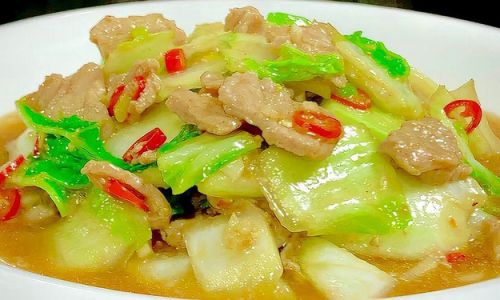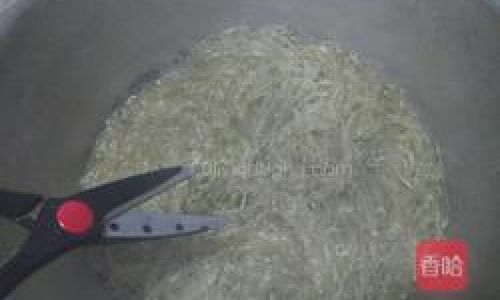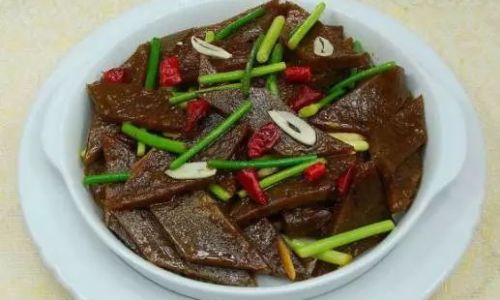Cabbage and meat stir-fry, a humble yet deeply satisfying dish, is a cornerstone of home-cooked meals across Asia and beyond. Its simplicity belies its ability to delight the senses with a harmonious blend of textures and flavors—tender meat, crisp-tender cabbage, and a savory sauce that ties everything together. Whether you’re a novice cook or a seasoned home chef, mastering this dish requires attention to detail, quality ingredients, and a few key techniques. This guide will walk you through every step, from selecting the freshest produce to achieving the perfect balance of seasonings, ensuring your cabbage and meat stir-fry becomes a staple in your culinary repertoire.
The Foundation: Ingredients and Their Roles
Every great dish begins with the right ingredients. For cabbage and meat stir-fry, freshness is non-negotiable. Let’s break down the essential components:
- Cabbage: Opt for a firm, compact head with crisp leaves. Green cabbage is classic, but Napa cabbage offers a milder, sweeter flavor. Avoid wilted or yellowing leaves, as they indicate age and may result in a mushy texture.
- Meat: Pork is traditional, with pork belly or shoulder being ideal for their fat content, which adds richness. Chicken thigh or beef flank can also work—ensure the meat is thinly sliced against the grain for tenderness.
- Aromatics: Garlic, ginger, and scallions form the flavor base. Fresh garlic and ginger are crucial; dried substitutes lack the same punch.
- Sauce: A blend of soy sauce, oyster sauce, and a touch of sugar creates umami depth. For a gluten-free option, tamari or coconut aminos can replace soy sauce.
- Oil: Use a neutral oil with a high smoke point, like vegetable or peanut oil, to withstand high-heat stir-frying.
- Optional Enhancements: Chili flakes, carrots, or bell peppers add color and complexity, while a splash of rice vinegar brightens the dish.
Preparation: The Key to Efficiency and Flavor
Stir-frying is a fast-paced cooking method, so mise en place (everything in its place) is essential. Prep your ingredients before lighting the stove:
- Slice the Cabbage: Remove the core and cut the cabbage into 1-inch squares or shred into thin ribbons. Thinner slices cook faster and meld better with the meat.
- Marinate the Meat: Toss sliced meat with soy sauce, rice wine (or sherry), cornstarch, and a pinch of white pepper. This “velveting” technique tenderizes the meat and locks in moisture.
- Prep Aromatics: Mince garlic and ginger finely. Slice scallions into 1-inch segments, separating whites and greens.
- Mix the Sauce: Combine soy sauce, oyster sauce, sugar, and a splash of water or broth in a small bowl. Having the sauce ready prevents overcooking ingredients while measuring.
The Cooking Process: High Heat, Precision, and Timing
Stir-frying demands a hot wok or skillet and constant motion. Follow these steps for perfection:
- Heat the Wok: Place your wok over high heat until it smokes lightly. Add oil and swirl to coat the surface. A well-seasoned carbon steel wok distributes heat evenly, but a stainless steel or cast-iron pan works if stirred vigorously.
- Sear the Meat: Add the marinated meat in a single layer, spreading it out to ensure even browning. Let it cook undisturbed for 30 seconds before stirring. Overcrowding the pan will steam the meat instead of searing it, so cook in batches if necessary. Remove the meat once it’s no longer pink and set aside.
- Sauté Aromatics: Lower the heat slightly and add garlic, ginger, and scallion whites. Stir-fry for 15–20 seconds until fragrant but not browned. Burnt garlic imparts bitterness, so act quickly.
- Stir-Fry the Cabbage: Increase the heat to high and add the cabbage. Toss continuously with a spatula or wok spatula, ensuring even cooking. For crisp-tender cabbage, cook 2–3 minutes; for softer texture, 4–5 minutes.
- Reintroduce the Meat: Return the cooked meat to the wok, pouring in any accumulated juices. Toss to combine.
- Add the Sauce: Pour the pre-mixed sauce over the ingredients. Stir vigorously to coat everything evenly. The sauce will thicken slightly from the cornstarch in the meat marinade.
- Finish with Scallions: Toss in the scallion greens and a drizzle of sesame oil (if using) just before removing from heat. The residual warmth will wilt the scallions without losing their vibrancy.
Achieving Texture Perfection
The allure of cabbage and meat stir-fry lies in its contrasting textures. Here’s how to nail them:

- Cabbage: Cook until just tender but still retaining a slight crunch. Overcooking turns it mushy, while undercooking leaves it raw and sulfurous.
- Meat: Searing creates a caramelized crust while keeping the interior juicy. Avoid over-stirring during the initial sear to prevent steaming.
- Sauce Consistency: The sauce should lightly coat the ingredients, not pool at the bottom. If too thick, add a splash of water; if too thin, simmer briefly to reduce.
Common Pitfalls and How to Avoid Them
Even seasoned cooks stumble. Here’s how to troubleshoot:
- Soggy Cabbage: Ensure high heat and constant stirring. Cooking in batches prevents overcrowding.
- Tough Meat: Slice against the grain to shorten muscle fibers. Marinating with cornstarch and oil (velveting) prevents dryness.
- Bland Flavor: Balance is key. Taste and adjust seasonings—a pinch of sugar, extra soy sauce, or a squeeze of lime can elevate the dish.
- Burnt Garlic: Add aromatics after reducing heat slightly. Keep a small bowl of water nearby to douse flames if the pan gets too hot.
Creative Variations and Additions
Customize your stir-fry with these twists:

- Spicy Kick: Add dried chili flakes or fresh bird’s-eye chilies during the aromatics step.
- Vegetable Medley: Incorporate shredded carrots, bell peppers, or mushrooms alongside the cabbage.
- Nutty Crunch: Top with toasted sesame seeds or crushed peanuts for texture.
- Fermented Funk: A spoonful of kimchi or doubanjiang (spicy bean paste) adds depth.
Serving Suggestions
This dish pairs beautifully with:
- Steamed Rice: Fluffy white rice balances the savory stir-fry.
- Noodles: Toss with udon or rice noodles for a heartier meal.
- Lettuce Wraps: Spoon the stir-fry into crisp lettuce cups for a low-carb option.
The Health Angle
Cabbage is a nutritional powerhouse, rich in fiber, vitamin C, and antioxidants. Pairing it with lean meat boosts protein intake, while the minimal oil used in stir-frying keeps the dish relatively light. Opt for low-sodium soy sauce and limit added sugar to make it even healthier.

Cultural Context: A Dish of Comfort and Adaptability
Cabbage and meat stir-fry transcends borders, appearing in Chinese households as “cài bào ròu” and Korean kitchens as “baechu-bokkeum.” Its adaptability reflects resourcefulness—a way to transform humble ingredients into a satisfying meal. In many cultures, it’s a symbol of home, evoking memories of family dinners and simple pleasures.
Conclusion: The Joy of a Well-Executed Stir-Fry
Mastering cabbage and meat stir-fry is about more than following a recipe; it’s about understanding the dance of heat, timing, and flavor. Each ingredient plays a role, and when harmonized, they create a dish that’s both comforting and exhilarating. Whether you’re cooking for one or a crowd, this recipe invites creativity while honoring tradition. So grab your wok, sharpen your knife, and let the sizzle of the pan guide you to stir-fry perfection. Your taste buds—and those you share the meal with—will thank you.







0 comments